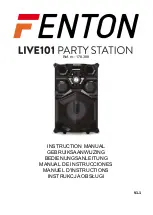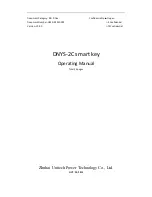
Section 24: Connection Setup
T
ieline
T E C H N O L O G Y
Page 218
24.8.4.
Perceptual Coding (Modeling)
Lossless data compression is limited in its applications because of its
voracious appetite for bits. As a result, there has been a considerable
investment of resources into the application of perceptual modeling and
hence perceptual coding techniques, which employ psychoacoustic theory.
How is this relevant you may ask? Well in simple terms, the human ear only
perceives relatively small portions an audio signal’s information. For
example, the human ear can only hear audio between its minimum and
maximum hearing thresholds and certain loud tones in an audio signal will
mask softer tones.
By replicating the information gathered from psychoacoustic theory, large
elements of an audio signal that the human ear perceives as irrelevant, or that
are masked, can be removed.
‘Lossy’ codecs that use these sophisticated predictive perceptual models to
analyze the human voice, music and other audio sources, can then encode
these signals using fewer bits.
Any information that is essentially imperceptible or is ‘masked’ within the
source audio is removed by frequency filters. This is the case with most
codecs used for audio broadcasting, streaming and communications.
Perceptual encoding will only encode the data required to provide an
accurate representation of the audio that is being captured for a broadcast –
reducing the total connection data bandwidth required for codec audio
signals.
How is this useful to users of
T
ieline
codecs? By using perceptual models that
are tailored for speech and music etc, it is possible to utilize algorithms that
are best suited to a broadcast’s content and connection bandwidth
availability. For example, if your broadcast content is voice only, by using
T
ieline’s
Voice G3
algorithm you can achieve good voice-quality audio at very
low POTS line bit rates.
24.9.
MPEG Explained
The collaborative MPEG (Moving Picture Experts Group) working group
standards provide open international multimedia standards for both audio and
video encoding at a range of data rates. MPEG coding utilizes The first standards,
MPEG-1 (ISO/IEC 11172), were defined in 1991 and approved in 1992.
Why use MPEG coding? Well MPEG coding is by far the most popular method of
audio coding and the proliferation of MPEG-compatible players is all-pervasive in
both broadcast and non-broadcast environments.
For example, there is little doubt that MP3 is the dominant compression
algorithm for creating music files for domestic consumption and many
decoders/players exist for this particular algorithm.
















































